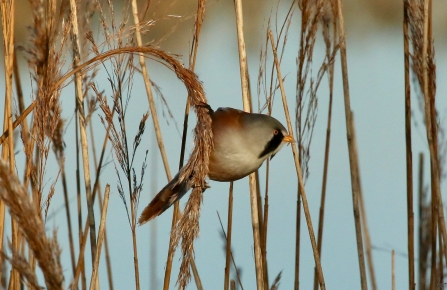I was sent some lovely photos of one of Farlington Marshes' most iconic birds the other day and it prompted me to do a quick bit on them as they really are very special.
Bearded Tits are a reed bed specialist and as such a pain to view. I would say though that Farlington has to be one of the best places in the area to see them, especially at this time of year.
On a sunny day with little wind they will venture on to the top of the reed to feed upon the seed heads. There is a growing population down there and a lucky encounter from the viewpoint on the western sea wall can mean anywhere from 15 to 30 can be seen.
But what makes them so special and such specialists? Interestingly they are not tits at all, like blue tits or great tits. In fact they aren't even called bearded tits. Panuris biamicus in latin has been the only constant name. Bearded reedling originally it has now been lumped in with the parrotbills as the bearded parrotbill and hence not really related to any other bird species in the UK.
It is a beautiful and illusive bird. They are communal, especially in the winter when they form a large flock or several smaller ones. In the summer they breed in loose colonies, building nests in the dead layers of reed near the base of the stems. They're preference for this lower nest sites leaves them very vulnerable to fluctuations in water levels.
Like many farmland birds they swap their diets according to the availability dictated by the seasons. In summer when they are feeding young, they pluck invertebrates from the stems of the reeds and surrounding vegetation. They are particularly fond of spiders according to one study.
During winter when bugs are less prevalent, they turn to the main staple of the reed bed, the seed. During this time they are very fond of consuming grit which they need to help grind the seed up.


